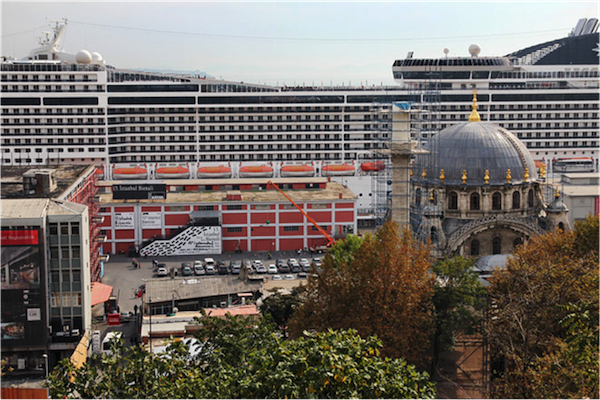Posted on October 23, 2013
Reflections on the 13th Istanbul Biennial
By Özge Ersoy 
Former warehouse at Salipazari harbor on the Bosporus. Used as a main venue in several editions of the Istanbul Biennial. © Photo: Haupt & Binder
“The streets have never been this ready for contemporary art before,” a colleague told me in a conversation in July. This was the time when the 13th Istanbul Biennial team was discussing whether or not they should stop pursuing projects outdoors. In the end, it was after the violent and deadly crackdown of the Gezi protests that reclaimed a public park in Istanbul, and the curator Fulya Erdemci was asking from the beginning how it would be possible to have multiple publics come and act together, as the conceptual framework mused on the idea of “publicness.”
The biennial eventually withdrew from the streets and went indoors, occupying five venues, including the Antrepo, the waterfront warehouse that has been the mainstay venue for the biennial for a number of years; the Galata Greek Primary School; the nonprofits ARTER and SALT Beyoglu; as well as 5533, an artist-run space in the city. Erdemci stated that she did not want to legitimize the authorities that have been responsible for the police aggression during the protests. In press interviews, she insisted that it is the people’s own voices that should be heard on the street. But this argument has not been convincing for many, to say the least.
There has been a number of criticisms that targeted the biennial for expanding into the two privately owned exhibition spaces, SALT and ARTER, because of their connections to the strongest business conglomerates in the country. But mostly it was the decision of going indoors that has been fiercely talked about—allegedly resulting in losing connection with the “outside.” This approach is precisely what suggests that the apprehension of “publicness” remains on a formalist level.
Who is still convinced that art and publicness only come together in an urban, architectural space? Is this combination possible only when passersby run into artworks on the street, or could it possibly entice the viewer to think what “public” might actually be, regardless of its location? I have a rather naïve understanding of what public is, which is all about engaging, embracing and “owning.” And I continue to question whether criticizing and protesting an artwork or an institution means to “own” them. That’s why it’s relevant to think about what has been different with the protests against the biennial this year.
Read the full article here.
